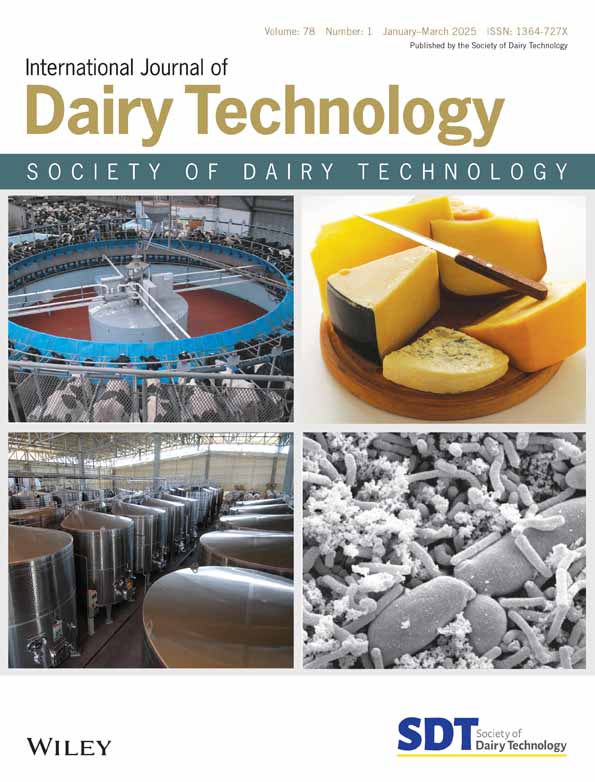Monoglyceride-based oleogel and oleofoam as the fat substitute in fat-reduced ice creams: The relation between partial coalescence degree and quality characteristics
Abstract
Nowadays, consumers are interested in low-fat ice creams. The potential of monoglyceride-based oleogel and oleofoam as fat replacers in ice cream production was explored. Ice cream with 50% oleogel possessed appropriate partial coalescence degree (PCD, 44.17%), complete network structure endowed ideal qualities and the generation of perceived creaminess. Increasing oleogel substitution level (100%) resulted in a higher PCD (60.20%), a decreased overrun (35.43%), and a decline in quality due to larger ice crystal formation. Fifty per cent oleofoam promoted higher viscosity and structural strength of ice cream mix, but excessive coalescence (72.83%) caused the formation of large fat aggregates in ice cream.
CONFLICT OF INTEREST STATEMENT
The authors declare no competing financial interest.
Open Research
DATA AVAILABILITY STATEMENT
The data that support the findings of this study are available from the corresponding author upon reasonable request.




